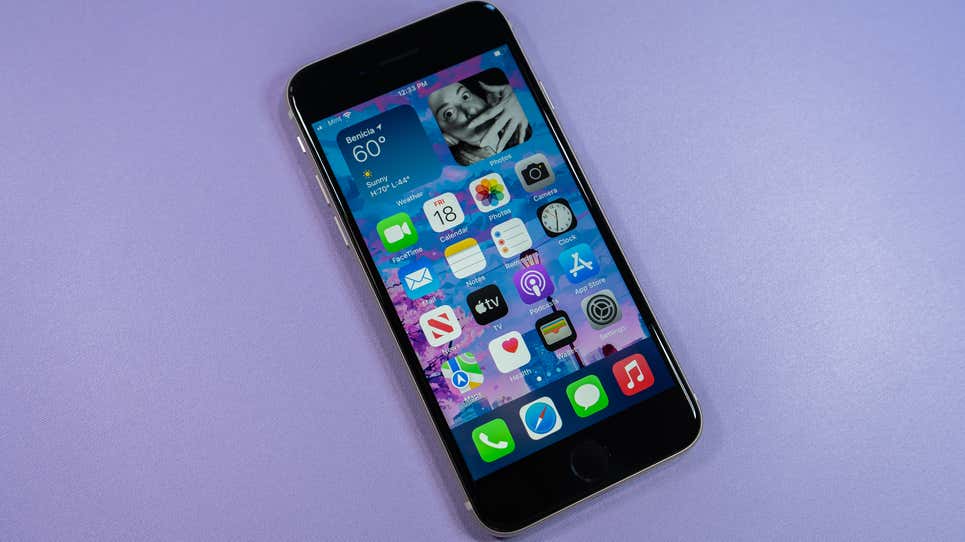Apple’s first “affordable” iPhone model joins the ranks of products that are officially vintage… and on its way to becoming officially obsolete.
Apple’s added the 1st Generation iPhone SE model to its official Vintage products list, as (with a tip of the hat) noticed by MacRumors. This marks it down as a product that is no longer guaranteed to be eligible for repairs through Apple stores or its authorised repairers, though it may be possible if parts are still available. With Apple reportedly shutting down production on TouchID sensors, some of those parts may become increasingly scarce quite quickly.
The shift for the original iPhone SE to the vintage list is not exactly a surprise. The first iPhone SE came out in 2016, which was a long time ago in iPhone terms. While Apple continued to sell it through to 2018, that five year gap is precisely the timeframe in which the company shifts products into the “vintage” category. Two years from now, we can expect it to be added to the “obsolete” category.
What’s The Difference Between Vintage and Obsolete?

Vintage clearly sounds much nicer; I don’t think you’d find anyone willing to drink an obsolete wine, but a vintage drop can be a lovely affair. Branding subtleties aside, while vintage Apple products aren’t guaranteed to have parts available, Apple’s still willing to have a go if it can find a replacement screen or speaker or whatever the problem is, typically at the customer’s cost.
Apple won’t even consider that for any product on the obsolete list, so if you’re packing an obsolete iPhone, iPad or Mac, you’d need to hit up alternative online parts sources (or maybe buy and gut something from an online auction house) and get handy with a soldering iron.
Diving into the obsolete products list is a fascinating, if slightly revisionary look through Apple history.
The current crop of vintage iPhones goes all the way back to the iPhone 4 (because Apple sold that critter for a long, long time) but not the iPhone 5C, for example. Meanwhile, on the Mac side of the fence, it’s not surprising that the OG iMac is long obsolete, even if it had the best advertising ever:
A little more surprising to note that Apple now seems to think that the original Apple I, Apple II and Apple Lisa were all in fact Macs, because it lists them there too. Hey Apple, the OG Apple computers predate the Mac, and the Apple Lisa was an internally competing product with the Mac when it first launched. They’re not Macs in any way at all!
I Just Bought An iPhone SE Last Week – How Can It Be Vintage or Obsolete?

Depending on where you bought it, it probably isn’t at all, as long as it was actually new when you got it.
What’s become vintage here is the 1st Generation iPhone SE, sold from 2016 as an “affordable” iPhone model, relative to the way Apple prices its smartphone range.
In the intervening years, it has released two further generations of iPhone SE (the iPhone SE 2nd Generation and iPhone SE 3rd Generation, how surprising!), but unlike the regular iPhone line where the suffixes are incremental, they’re all largely just sold as “iPhone SE”. If you squint really hard at the fine print on the box, you might just spot a “2nd Generation” or “3rd Generation” in there somewhere, but that’s presuming you kept the box.
So how can you tell? There’s a few key giveaways as to whether the iPhone SE in your hand is still on the approved list, or if it’s being gently shoved towards its own personal zimmer frame.
The original iPhone SE (1st Generation) has an aluminium back, where the newer models feature glass. There’s also a difference in colour choices; while the first generation has that aluminium panel in either a silver colour (with either black/space grey or silver/silver top and bottom) or gold and rose gold with white top and bottom, the 2nd and 3rd gen models have single colour backs in Product RED (2nd and 3rd Gen), White and Black (2nd Gen) or Starlight and Midnight (3rd Gen).
The 1st Generation iPhone SE also only has a 4 inch display where the newer generation models jump up slightly to 4.7 inches, though you might need them side by side to pick that.
You could also check in the settings app for iOS upgrades. If you’re stuck on iOS 15 and your iPhone SE won’t go any higher, it’s a first generation model for sure. Settings will also give you the model number, which should be any of A1723, A1662 or A1724 if it’s the first gen variant.
What Should I Do With a Vintage iPhone SE?

Ideally use it – but in a smart way. The lack of iOS upgrades over time does open up the potential for security bugs that might make it a bad option for your online banking, but if it’s otherwise running and you’re careful with your personal information (which you should be anyway) then as long as it runs, why not play a little Candy Crush, use it to take photos or to browse your favourite websites?
Once those kinds of uses are exhausted, it’s time to responsibly recycle it. Apple stores will do that for you for any iPhone – you shouldn’t even need to make an appointment for that – but you can also sort out recycling a vintage or obsolete busted iPhone through services like Mobile Muster or finding a service through Planet Ark’s Recycling Near You.
